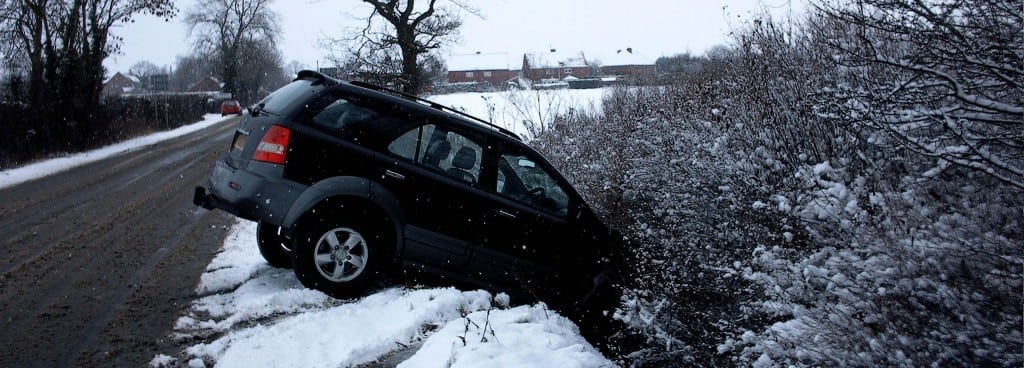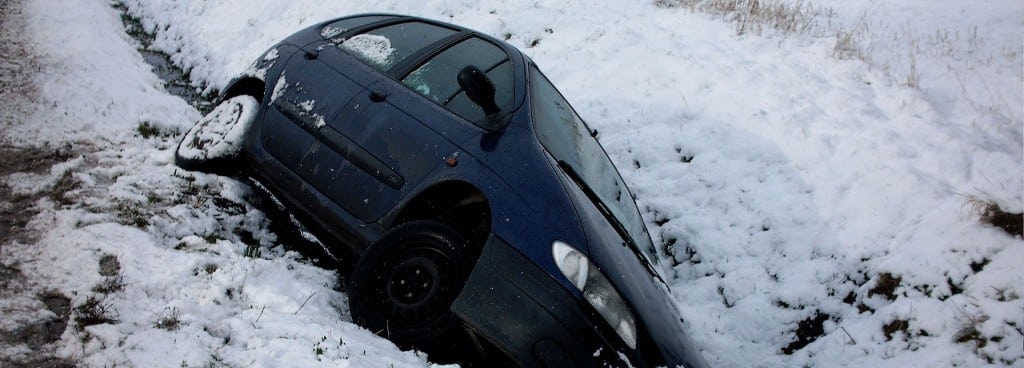Winter is very late this year but I don’t think we should write it off just yet! Here’s our top tips when winter driving in the cold, snow and ice…

Reserving power
Putting on lights, heaters and wipers will put extra strain on your car battery and these are usually used in the winter months during dark rush hour trips.
Your average car battery lasts around 5 years. If you think it is coming to the end of its life span it will be wise to replace it before winter sets in.
Try to remember to:
– avoid using electrics like the heater and heated rear windows for longer than necessary
– if you are not using the car over the weekend then if possible put it on a charger
– make sure electrics are switched off when completing your journey before switching off the engine
– do not switch on any electrics until you have start your engine.
A clear view ahead
Make sure you adequately clear your windows before setting off and clear any snow off your bonnet and roof to stop extra snow hitting your windscreen. Low winter sun can be a particular problem.
– Keep a safe distance when driving and wear sunglasses when safe.
– Make sure your have wash fluid with ant-freezing solution. DO NOT use engine anti-freeze!
– Use your air conditioning for a faster way of de-misting your screen.
– Make sure you keep your windscreen and windows clean both inside and out to reduce glare from the low sun.
Light the way
Make sure your lenses are clean. It is illegal to drive with covered lenses and number plate. Also ensure your bulbs are working.
– don’t forget to clean your headlights when clearing snow off your car.
– also ensure your brake lights are working and visible.
Check your tyres
Keeping a check on your tyres is essential all year round but in winter it is especially important.
– ensure your tyre pressures are correct. reducing the tyre pressure in winter IS NOT recommended.
– it is worth considering changing your tyres for winter or all season tyres which give better grip
Be prepared
If you are unfortunate enough to get stuck in snow it is useful to have packed these in the car before any journey:
– your mobile phone
– your mobile charger or spare battery
– a blanket
– a drink
– a bar of chocolate
– extra winter clothes
and for your hard core survivors:
– a shovel
– flashlight
– carpet or sack (to get unstuck see below)
– first aid kit
– boots / wellies
Before each journey
– give yourself extra time to prepare your car
– do not drive with a small viewing area. make sure you clear all your windows
– warm your key when you get a frozen lock. i.e. use a lighter’s flame and heat up the key a little.
– plan your route using main roads and motorways which are less likely to be blocked with snow.
– check weather reports before leaving.
Driving in the snow and ice
– remember stopping distances are 10 times longer in ice and snow
– if you are wearing combersome boots for walking in the snow take additional shoes for driving
– start in 2nd gear and slowly ease your foot off the clutch. This ensure a safer start and less wheel spinning.
– when stopping in the snow slowly apply your brakes to avoid skidding and sliding.
– when driving try to keep at a slow but constant speed especially when driving up and down hill.
– when driving an automatic use the winter setting or drive in gear selection two.
– if you get stuck in the snow use an old carpet or sack under the driving wheels (most cars driving wheels are at the front but some i.e. BMW’s tend to be at the rear)

And if you have a crash…
The chances of having a crash in winter are greatly increased. If the worst does happen here’s what you need to do:
If you are involved in a road-traffic accident as a driver and one or more of the following occurs:
– a person, other than yourself, is injured
– damage is caused to another vehicle or to someone else’s property – including street lamps, signs, bollards etc.
– an animal* has been killed or injured, except in your own vehicle or trailer
Then you must:
– stop and remain at the scene for a reasonable period
– give your vehicle registration number, your name and address, and that of the vehicle owner (if different) to anyone with reasonable grounds for asking for those details
If you don’t exchange those details at the scene, you must report the accident at a police station or to a police constable as soon as you can, and in any case within 24 hours.
If another person is injured you must:
– produce your certificate of insurance, if anyone at the scene has reasonable grounds to see it.
– if you do not, you must report the accident at a police station or to a constable as soon as you can and in any case within 24 hours. You’ll need to produce your certificate of insurance but if you don’t have it when reporting the accident to the police, you may take it, within seven days of the accident, to the police station you nominate when you report the incident.
Reporting the accident to the police by telephone is not sufficient and you cannot ask someone else to report for you.
You’re obliged to do these things not only when you are directly involved in an accident, but also if your vehicle’s ‘presence’ was a factor.



